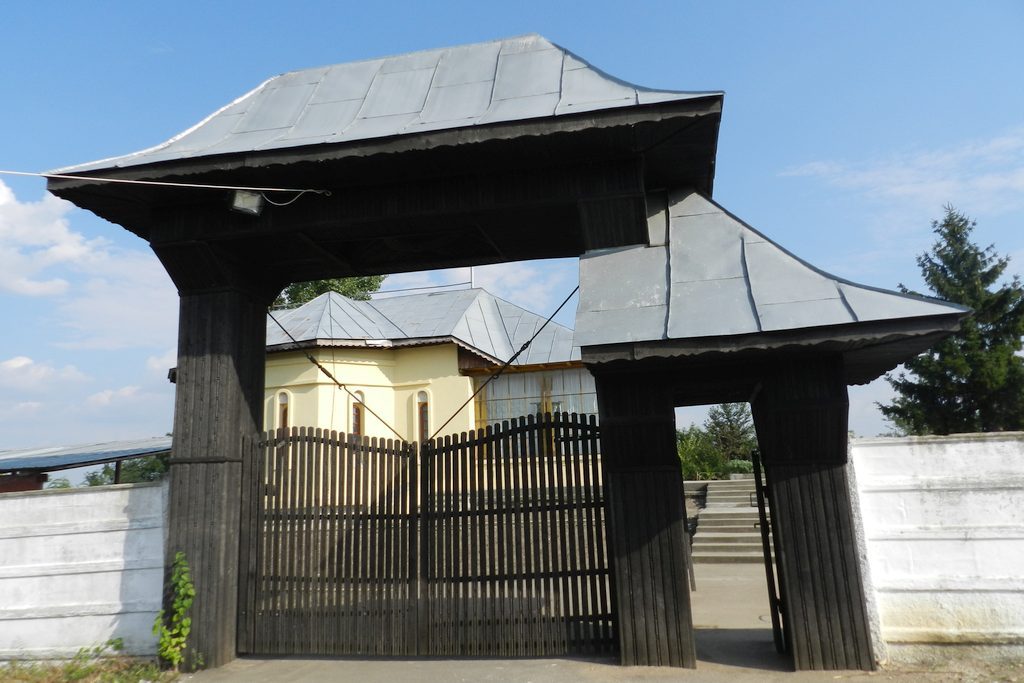

In 1969 the museum in Slatina city, was enriched with a new section of folk art that was added to the history section created in 1952 and constantly developed until then. At its establishment, the ethnography department had a patimony of 1,480 objects, patrimony that was constantly enriched, reaching today, 33 years since its establishment, to a total of 8933 objects. This ethnographic heritage reflects the popular creation of the almost all of the villages and communes in Olt county, territory where three ethnographic areas, meet: Olt, Romanati and Câmpia Boianului. In Olt county we encounter artistic values particularly in folk costumes, rugs and in interior textiles, in folk pottery that the specialty literature knows as the Oboga Ceramics. These genres of folk art are the ones that prevail in the ethnographik heritage of the Olt County Museum. We must not forget, also the less representative genres for Olt County: artistic wood, folk art objects made of iron, pieces related habits (painted eggs, fireplace icons etc.) and pieces related to crafts and traditional occupations of the region. The collection of folk costumes of the section comprises primarily a rich treasure of diaphanous scarfs made of gossamer (over 300 pieces), specific pieces for head finery. At this basic adornment of the folk costume we can add jewelry, crafted by local craftsmen of silver and brass, leashes of multicolored beads and the necklaces from different coins. The shirts of the folk costume with ornaments chosen in weaving machine or sewn, varies depending of the region, age and occasion. It can also be monitored their evolution in time. Another basic piece of the folk costume, specific to Olt County is the traditional skirt, “zăvelca” or “boşceaua” as it is called in the local language. With shades of red, often with anthropomorphic and zoomorphic reasons,the traditional skirts in Romanati differ from traditional skirts in the north side of the county, on which the glow of the butterflies, of the metal wire and of the multicolored beads, harmoniously blend with tones of blue (the collection holds 560 such pieces ). Men’s costume is represented by summer suit, with long shirt or short, richly decorated with “şabace” _and by the winter costume with pants of rough homespun with chenille. In winter both men and women wore sheepskin coats adorned in particular with spiral reasons worked by the furriers from Caracal, Vădastra, Vişina etc. And from this cathegory of pieces the museum prides itself with a collection rich enough (70 coats). The pieces of pottery were brought the centers of potters from the Valley of Olteţ: Corbeni, Româna, Oboga as well as from places where ceramics of some centers from Vâlcea and Argeş. The collection of ceramics is well represented in the museum, counting a total of 2,800 items. Among the important collections that have enriched the museum’s ethnographic patrimony we also mention the collection of rugs (carpets, blankets, Quilt) to which the ornamental variety and color range lead to major artistic achievements (the collection has 260 pieces). In early 2003 the ethnographic patrimony of the Olt County Museum amounts a number of 8932 items which make up 56 collections that are popularized through the basic exhibitions organized in Slatina, Bals and Chilia-Făgeţelu, through numerous temporary exhibitions and special publications.
